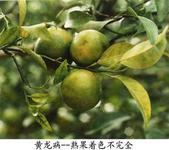Symptom Identification and Prevention and Control techniques of Citrus Huanglong Disease

Citrus Huanglong disease is also known as "orange cancer". A bacterial disease caused by phloem, which is spread by grafted seedlings and an insect called citrus planthopper, does great harm to citrus. If allowed to spread, it will cause a fatal blow to the citrus industry, which will cause a fatal blow to the citrus industry. Great attention must be paid to it. First, symptom identification ⑴ yellow shoot: the typical symptom of the diseased tree in the initial stage is the appearance of 1-2 branches or more branches yellowing in the thick green crown. ⑵ mottled yellowing: after the leaf turned green, it began to yellowing from the base of the leaf, and gradually spread to form a yellow-green leaf, yellow and green alternately. ⑶ shoots: the new shoots on the diseased shoots are short and weak, the diseased leaves are thin and narrow, and the leaves are sclerotic, similar to the symptoms of zinc deficiency. The growth of the diseased tree gradually weakens, and then the diseased plant gradually dies. ⑷ fruit: the fruit of the diseased tree is deformed, the pericarp becomes soft, the taste is sour, the fruit is small, and the pedicel of some varieties is first yellow, which is called "red nose fruit". Second, prevention and control technology ⑴ to strengthen plant quarantine: the introduction and spread of diseased seedlings and scions is strictly prohibited. ⑵ establish disease-free nursery: cultivate disease-free seedlings, all use disease-free seedlings. ⑶ excavates diseased trees in time: for spring and autumn shoots every year, especially in autumn shoots, once diseased or suspected diseased plants are found, they are immediately removed and burned. Organic phosphorus should be sprayed on diseased trees and nearby plants before digging up diseased trees to prevent citrus planthopper from spreading from diseased trees to the surrounding areas. In citrus orchards with mild disease, diseased plants can be dug up and replanted with disease-free seedlings. ⑷ control of citrus planthopper: planthopper larvae grow on new buds and shoots of citrus. By wiping off sporadic shoots and controlling water and fertilizer, the new shoots are neat and uniform, and the shooting period is shortened. When the new shoots are drawn to 1-2 cm, pesticides are sprayed 2-3 times (7-10 days apart) to control citrus planthopper and aphids and leaf moths at the same time. The pesticide can be 1000 times of 20% thiocarbamate EC or 4.5% cypermethrin or 1000 times of 40% cypermethrin. Citrus planthopper likes to feed and breed on Jiuli incense to survive the winter, remove Rutaceae and other Rutaceae plants around the orchard and spray insecticides, which plays a certain role in reducing the number of wood lice. ⑸ orchard management: 2-3 times a year ploughing and weeding, strengthen water and fertilizer management, enhance tree potential.
- Prev

Control measures of Citrus foot Rot
Distribution and harmful symptoms: foot rot, also known as skirt rot, is a root and neck disease, which occurs in all citrus areas in China. It harms the citrus root neck and the main root cortex, and the diseased bark is brown with the smell of lees and often exudes gum. Under the dry condition, the disease part cracked and hardened, and the boundary between it and the healthy part was obvious. At the beginning, only the tree table is endangered.
- Next

Identification and Control of Citrus Huanglong Disease
1. The typical symptom of the diseased tree in the initial stage is the yellowing of leaves with 1-2 or more branches in the thick green crown. There are two types of symptoms in this yellowing branch, one is uniform yellowing of the whole leaf, and the other is a piece of yellow and green, which is called mottled type. The total of these two types of leaves.
Related
- Moge, come on! The staff of the peasant association in the producing area of cantaloupe were frightened when the crowd gathered.
- Causes and Solutions of low Fruit setting rate of Apple
- Symptoms and control measures of passion fruit virus disease
- Fruit growing lesson: how do apple orchards keep high yields?
- Can you build orchards in the mountains? What are the pros and cons?
- How to manage the coloring period of Crisson grape?
- This paper introduces the processing technology of two kinds of fig products.
- How much is a month for retired teachers in rural areas by 2020?
- How can strawberry planting increase sugar content? We should pay attention to management in many aspects.
- What are the cultivation techniques on how to improve the yield of golden fruit?

